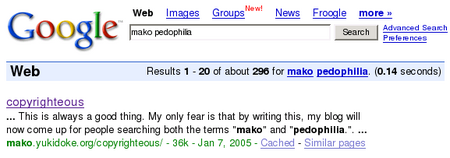I was pleased to see that my recent post on the interrobang generated a good deal of excitement for this long neglected piece of punctuation. I’ve heard that there will even be a compose key sequence for the interrobang in future version of Debian’s X! It’s inspired me to do another little report from my explorations of Unicode.
I can not claim to be an expert in math(s) and I welcome clarifications and corrections. That said, I find the mathematical symbols in Unicode to be some of the most interesting. I have found these useful in the past when I wanted to concisely express that something is very much greater than (⋙) something else.
Recently, I have been confused by the "neither less-than nor greater-than" (≸) and its companion "neither greater-than nor less-than" (≹) glyphs.
In the past, I have (naively I’m told by people who are better at math than I) eschewed Unicode entirely and used the ASCII equals (=) character every time I wanted to express this relationship. I’m told (although I have yet to meet someone who can give me an example or explain why) that the relationship between numbers need not be equal to, less than, nor greater-than in some forms of math.
I’m willing to accept that. But wouldn’t that also require a "neither greater-than nor less-than nor equal to" symbol? Wouldn’t the "neither greater-than nor less-than" symbol really be implying "neither greater-than nor less-than but possibly equal to or not equal to" which would be something different?
Another character I’m still confused by is the "strictly equivalent to" symbol (≣). I understand =, ≠, ≡, and ≢ but my complexity threshold seems to be breached when the fourth bar is introduced. I also don’t understand why there is not a "not strictly equivalent to" character.
By the definitions I use, ≸ and ≹ seem strictly equivalent to me. Would be it fair to say that ≸ ≣ ≹‽
